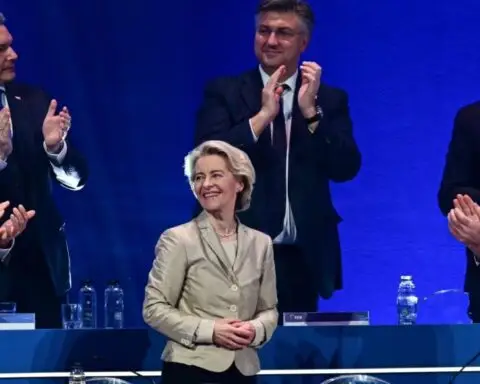The Commission will use a diversified funding strategy to raise up to around €800 billion in current prices until 2026. This approach, which will be in line with the best practices of sovereign issuers, will enable the Commission to raise the needed volumes in a smooth and efficient way. This will also attract investors to Europe and strengthen the international role of the euro.
Johannes Hahn, Commissioner in charge of Budget and Administration, said: “NextGenerationEU is a game changer for European capital markets. Today, we are unveiling the engine that will pump the fuel to power NextGenerationEU. The funding strategy will operationalise the NextGenerationEU borrowing, so we will have all necessary tools in place to kick-start the social and economic recovery and promote our green, digital and resilient growth. The message is clear: as soon as the Commission has been legally enabled to borrow, we are ready to get going!”
Borrowing to finance the recovery
NextGenerationEU – at the heart of the EU’s response to the coronavirus pandemic – will be funded by borrowing on the capital markets. We will raise up to around €800 billion between now and end-2026.
This will translate into borrowing volumes of on average roughly €150 billion per year, which will make the EU one of the largest issuers in euro. All borrowing will be repaid by 2058.
While the Commission has been borrowing before – to support EU Member States and third countries – the volumes, frequency and complexity of the NextGenerationEU borrowing have called for a fundamental change in the approach to capital markets.
A diversified funding strategy will respond to these new funding needs. It will enable the Commission to mobilise all funds when required on the most advantageous terms for the EU Member States and their citizens.
Diversified funding strategy: a snapshot
A diversified funding strategy combines the use of different funding instruments and funding techniques with an open and transparent communication to the market participants.
The Commission’s diversified funding strategy would combine:
- Annual decision on borrowing volumes and 6-monthly communication on the funding plan’s key parameters, to offer transparency and predictability to investors and other stakeholders;
- Structured and transparent relationships with banks supporting the issuance programme (via a Primary Dealer Network);
- Multiple funding instruments (medium and long-term bonds, some of which will be issued as NextGenerationEU green bonds, and EU-Bills) to maintain flexibility in terms of market access and to manage liquidity needs and the maturity profile;
- A combination of auctions and syndications, to ensure cost efficient access to the necessary funding on advantageous terms.
The borrowing operations will be embedded in a robust governance framework, which will ensure coherent and consistent execution.
In its work, the Commission will continue to coordinate with other issuers, including the EU Member States and supranationals.
The added value of a diversified funding strategy
The diversified funding strategy will help the Commission to achieve two main objectives: address the large funding needs of NextGenerationEU and obtain the desired low cost and low execution risk in the interest of all Member States and their citizens:
- By using a wide range of maturities and instruments and by making funding operations more predictable, the Commission will ensure a larger market absorption capacity. The ability to auction debt will make the funding operations even more efficient. This will help address the large funding needs.
- By allowing flexibility to decide when to execute funding operations and which funding techniques or instruments to use, the Commission will obtain the desired low cost and low execution risk in the interest of all Member States.
Next steps
Following today’s package, the Commission will proceed with a series of steps to operationalise the diversified funding strategy. Among them:
- Setting up a Primary Dealer Network. In line with practices of comparable issuers, the Commission will set up a Primary Dealer Network to facilitate the efficient execution of auctions and syndicated transactions, support liquidity in the secondary markets, and ensure the placement of our debt with the widest possible investor base. The application form and the General Terms and Conditions for participation will be published shortly.
- Publish the first annual Borrowing Decision (and accompanying Financing Decision) and first NextGenerationEU funding plan. To ensure transparent communication with the markets, the Commission will adopt its first annual borrowing decision and communicate the information related to its first funding plan before the start of the NextGenerationEU borrowing, expected this summer (timing being dependent on the approval of the Own Resources Decision by all Member States which will empower the Commission to borrow for NextGenerationEU). The borrowing operations can then start as soon as the Own Resources Decision will enter into force. Funding plans will then be updated semi-annually.
Background
NextGenerationEU
NextGenerationEU is at the heart of the EU response to the coronavirus crisis and aims to support the economic recovery and build a greener, more digital and more resilient future. The EU agreed this instrument as part of an over €2 trillion (in current prices) or €1.8 trillion (in 2018 prices) stimulus package, which also comprises the 2021-2027 long-term budget.
The centrepiece of NextGenerationEU is the Recovery and Resilience Facility – an instrument to offer grants and loans to support reforms and investments in the EU Member States with a total value of €723.8 billion in current prices.
In addition, NextGenerationEU will reinforce several EU programmes. To finance NextGenerationEU, the EU will borrow on the capital markets. Repayment will take place over a long-time horizon, until 2058. This will avoid immediate pressure on Member States’ national finances and enable EU Member States to focus their efforts on the recovery.
To help repay the borrowing, the EU will look into introducing new own resources (or sources of revenue) to the EU budget, on top of the already existing ones.
The EU as a borrower
The European Commission, on behalf of the EU, is a well-established participant in the capital markets. Over a period of 40 years, the European Commission has run several lending programmes to support EU Member States and third countries.
Last year, the Commission also started borrowing for SURE – the up to €100 billion instrument – to help protect jobs and keep people in employment. So far, 3/4ths of the EU SURE funds have been raised in six very successful issuances, which has made it possible to finance loans to Member States on very advantageous terms.
All of these lending operations were financed on a back-to-back basis, mainly through syndicated bond issuances.






